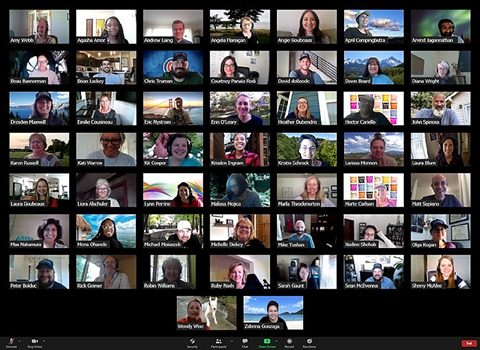Putting “Unity” Back in Public Health Community
The COVID-19 pandemic highlighted the health disparities in our health system and the social determinants that drive those disparities. The isolation and social distancing stemming from the pandemic also highlighted our need to connect within our communities. Social distancing in public and at work, the extended inability to see or take care of loved ones, friction caused by political points of view – all of this has led to a loss of unity within our local and extended communities.
At Lantana, we are part of our own work community as well as the larger public health community. We were not as strongly affected by the social distancing at work or a shift to work from home because we are today and have always been a distributed company with team members throughout the U.S., Canada, and Australia. We even published some work from home tips in early 2020 to help those new to working from home.
A vital piece of our sense of community and company culture is our annual retreat where we get together for a week to discuss company-wide strategy, get company updates, and spend time building, fostering, and expanding relationships. During the pandemic, we had to switch from in-person to create a week of virtual togetherness for our 2020 retreat. Many of us were not sure how it would work or what to expect since it was the first time the retreat was held virtually, but to our surprise, it felt very similar, though not the same as the in-person retreat. We definitely missed being around the same table and sharing a meal.

The Centers for Medicare & Medicaid Services (CMS) defines health equity as “the attainment of the highest level of health for all people, where everyone has a fair and just opportunity to attain their optimal health regardless of race, ethnicity, disability, sexual orientation, gender identity, socioeconomic status, geography, preferred language, or other factors that affect access to care and health outcomes.” One of the ways that we can work towards reunifying our local and national communities is to address the issues of health equity. The Biden-Harris administration is taking steps in this direction through the CMS Notice of Proposed Rule Making (NPRM) process and the CMS Framework for Health Equity to address the needs of vulnerable and underserved communities.
The CMS Framework for Health Equity focuses on five priorities:
- Expand the collection, reporting, and analysis of standardized data.
- Assess causes of disparities within CMS programs, and address inequities in policies and operations to close gaps.
- Build capacity of healthcare organizations and the workforce to reduce health and healthcare disparities.
- Advance language access, health literacy, and the provision of culturally tailored services.
- Increase all forms of accountability to healthcare services and coverage.
CMS is showing its commitment to these priorities by hosting webinars and conferences such as the public webinar “From Data to Action: How CMS and its Stakeholders Are Addressing Inequities in Healthcare.” The organization is also hosting its first Health Equity conference in June 2023. Finally, CMS is directly addressing health equity and impacts to vulnerable and underserved populations in their quality reporting programs.
Lantana is working on a Centers for Disease Control and Prevention (CDC) project to leverage the CDC’s National Healthcare Safety Network’s (NHSN) which is the nation’s most widely used healthcare-associated infection (HAI) tracking system to:
- Improve NHSN’s surveillance by adding patient-level, social determinants of health (SDOH) data for risk adjustment or risk stratification purposes
- Identify individual SDOH data elements that add explanatory power to NHSN’s current predictive modeling for HAIs, with a focus on surgical site infections
- Explore whether and how NHSN can leverage privately curated SDOH data
We can connect with our communities, both personally and professionally in big and small ways. For me, I have maintained and expanded my connections within my community by continuing to volunteer at non-profits such as Feed My Starving Children and other food banks and engaging more in my community/neighborhood by participating in and hosting parties to share laughs and good food.
As they say, the best way to get to know someone and build a sense of community is to get involved, expand your table to share food and ideas while building bridges with love and a smile!
(1) U.S. Department of Health and Human Services. (2022, April). CMS framework for health equity 2022–2032. https://www.cms.gov/files/document/cms-framework-health-equity.pdf. Accessed March 2023.
